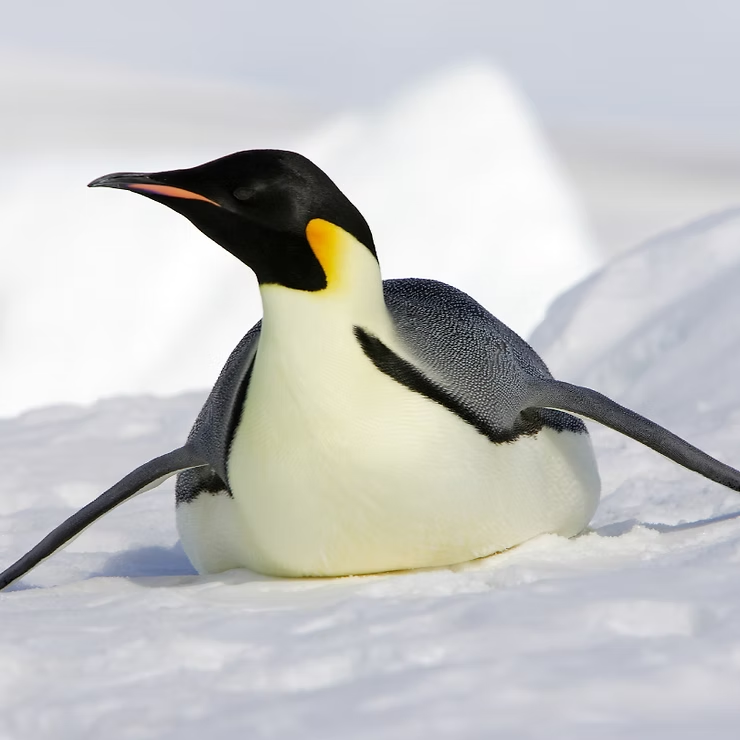Introduction
The Emperor Penguin is the largest penguin species, renowned for its striking appearance, incredible parenting, and adaptability to the harsh Antarctic environment. These magnificent birds have fascinated scientists and nature enthusiasts alike.
Appearance and Size
Emperor Penguins can grow up to 4 feet tall and weigh 49–99 pounds. They have black heads, backs, and wings, with a white belly and a yellow patch on the neck. Their streamlined bodies and strong flippers allow them to swim at speeds up to 9 mph and dive to depths of over 1,500 feet for up to 20 minutes.
Habitat
Native to Antarctica, Emperor Penguins inhabit coastal areas and ice shelves, close to the open ocean for easy access to food. Their insulating feathers and layer of blubber help them survive extreme cold. They build nests on the ice, providing stable platforms for breeding colonies.
- Coastal Antarctica and ice shelves
- Adapted to freezing temperatures with feathers and blubber
- Travel long distances, sometimes 100 km, for food
Diet
These penguins feed mainly on fish, squid, and krill. They are excellent hunters, diving deep into the ocean to catch prey. Adults can consume up to 2 kg (4.4 lbs) of food per day to maintain energy in the extreme cold.
- Main diet: fish, squid, krill
- Dive to 500 meters for hunting
- Essential for energy and survival in Antarctica
Breeding and Parenting
During the Antarctic winter, Emperor Penguins form large breeding colonies. Females lay a single egg, which the male incubates on his feet under a brood pouch while she searches for food. Parents take turns feeding and protecting the chick once it hatches, using regurgitated food. Chicks often huddle in creches for warmth and protection.
Social Behavior
Emperor Penguins are highly social, living in colonies of thousands. They huddle to conserve heat and communicate with vocalizations like trumpeting and braying. Courtship involves head-bobbing, calling, and synchronized walks between paired penguins.
Predators
- Leopard seals: ambush penguins at the water’s edge
- Killer whales (orcas): hunt penguins in the water
- Other threats: skuas, giant petrels, occasionally Weddell seals
Conservation Status
Emperor Penguins are classified as near threatened by the IUCN. Climate change poses the greatest threat, reducing sea ice essential for breeding and hunting. Human activities like fishing and oil exploration also impact their survival. Conservation efforts focus on marine protected areas, sustainable policies, and research monitoring to ensure population stability.
Conclusion
The Emperor Penguin is a symbol of resilience and teamwork in extreme conditions. From their impressive diving abilities to devoted parenting and strong social bonds, they showcase remarkable adaptations. Protecting their habitat is crucial for future generations to witness these incredible birds thriving in Antarctica.

